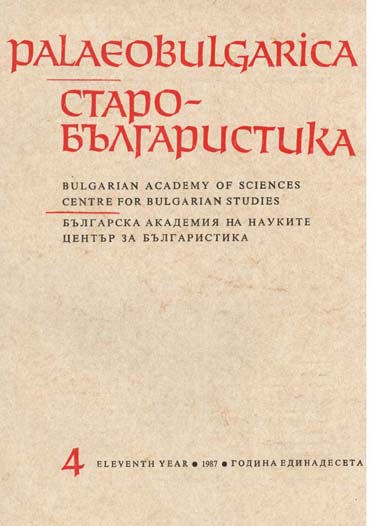
We kindly inform you that, as long as the subject affiliation of our 300.000+ articles is in progress, you might get unsufficient or no results on your third level or second level search. In this case, please broaden your search criteria.


The process of futuristic poetry formation associated with the creative work of Ukrainian futurism founder Mykhailo Semenko is reconstructed in the article. It is shown that attempts to ground aesthetic and artistic principles of futurism at the beginning of the XX century were apprehended ambiguously by the literary circles of that time. Contemporary minds to the events of 1910-1920s make it possible both to reconstruct the situation in Ukrainian cultural space of that period objectively and appreciate achievements and failures of futurists impartially. The article reveals that futurism ranks the special place among the schools of Ukrainian avant-garde art which make themselves vividly known at the beginning of the XX century. It is caused by some reasons: firstly, it existed rather short period of time – just nearly twenty years; secondly, it was pretty complicated to self-determinate within Italian and Russian models of this school of art; thirdly, in fact, it was ceased by force as most of its participants were repressed in the second half of the 1930s. Historical fate of Ukrainian futurism is coincided with the one of its founder, Mykhailo Semenko (1892–1937), the famous poet and theorist of art. In 1914 he claimed the appearance of ‘futuristic poetry’, absolutely new school in Ukrainian literature, with his collections of poetry “Excitation” and “Quero-futurism”. In 1937 he was executed by shooting, his death put an end to the Ukrainian futurism existence. The author of this paper analyses and evaluates the period of 1913–1914 in Mykhailo Semenko’s creative work when the transition from one system of aesthetic and art values to absolutely new one took place. To the author’s mind, such conversion was quite complicated and even painful both for Semenko and his admirers of that time. That’s why this period needs reconstructing in detail. The start of Mykhailo Semenko’s literary creative work is marked with the publishing his verses “Gift”, “Sin”, “My flower” in the journal “Ukrainian Khata” and his first collection of poems “Prelude” in 1913. During this period the poet joined in the circle of young literary men who collaborate with ‘Ukrainian Khata’. As is known, monthly journal ‘Ukrainian Khata’ came out within the period of 1909–1914 and covered the wide range of problems: from literary to economic. To the author of this paper’s mind, the analysis of Ukrainian futuristic poetry requires not just emphasizing on the events of 1913–1914 років but also reconstructing the literary process going on at that time. Moral and psychological state of young Semenko is reflected through the logical analysis the atmosphere of critics and prosecution accompanying the occurrence of “Prelude”. It was mixed attitude to the poetic debut of Mykhailo Semenko : ‘neoclassicist’ M. Zerov didn’t accept both the collection of poems “Prelude” as a whole and the poems included, he even called the young poet not to write poetry any more; M.Voronoy didn’t perceive the poems from this collection criticizing young poet in a sharp and offensive manner. The year of 1913 was crucial for Mykhailo Semenko. At first, he published the poetic collection “Prelude”, secondly, he experienced the critics of this book from M. Zerov and M. Voronoy, thirdly, he got acquainted with the poetry of Russian futurists, fourthly, he dropped out of Bekhterev Psychoneurological Institute where he had been studying for 2 years, fifthly, he was getting aware of the necessity to transform the aesthetic and artistic fundamentals of his own poetry. It was those events that acted as a trigger to change the world-view of Mykhailo Semenko. In the article the author compare the creative work of two poets – M. Semenko and M. Voronogo. Considering the situation ‘poet-critic’, the study concludes that contemporary Ukrainian scholars are trying to smooth over and even idealize the processes in country’s literary space at the beginning of the 20th century as well as the way of relations between different generations of creators. 1914 is considered the date of Ukrainian futurism birth as that was the year when both futuristic manifestos of Mykhailo Semenko and his collection of poems “Excitation” as an example of futuristic likes were published. Unique identity of M. Semenko as a poet is substantially determined by his interest to free verse. Publishing 8-page collection of poems “Excitation”, Семенко used the full advantage of vers libre. In conclusion, the author admits: firstly, the crucial 1914 was the year of Ukrainian futuristic poetry formation; secondly, emotional and sentimental orientation of Semenko’s poetry experienced fundamental transformation on account of new themes and new aesthetic and figurative means; thirdly, the collection of poems “Excitation” should be considered as the first attempt to frame the Ukrainian model of futurism; fourthly, Ukrainian futurism is of not only experimental character but also obtains such features as dynamism, roughness, shock, declarative nature etc.
More...
Purpose of the work is to study the importance of popular scientific literature, presented in an accessible and at the same time interesting form for intellectual, aesthetic and professional development and education of a future designer and his personal becoming. Methodology of a popular scientific edition research requires ability to combine scientific depth in the comprehension of material and at the same time ability to tell about difficult things easily and interestingly. General scientific methods of analysis, synthesis, generalization, etc. are used. The scientific novelty of work consists in application of the modern approach to the popular scientific edition research with an authorial look to the traditional use of a book. It becomes the first push to the further general philosophic conclusions, performs encyclopaedic functions, acquainting a reader with causes and effects of many phenomena and variety of interesting facts and accomplishes educational and encouraging functions. Conclusions. Due to actuality and universality, modern popular scientific, cognitive, poly-thematic literature becomes the beginning of serious fascination by one or another discipline. It gives an opportunity to readers to extend general erudition and assists forming of active, responsible, strong and creative personality, capable of self-development and self-realization.
More...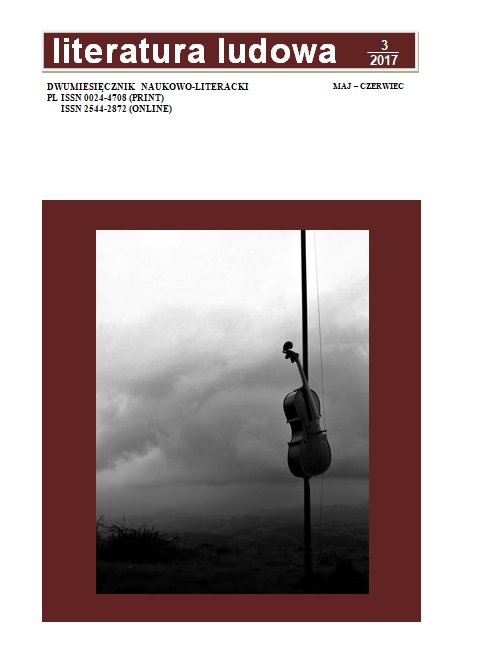
Artykuł analizuje mało znane dzieło C.S. Lewisa – Pakameria. Zanim powstała Narnia – w odniesieniu do zagadnień związanych z fenomenem twórczości dziecięcej, a w szczególności jej ludyczno-folklorystycznej genezy. Opierając się na antropologicznej teorii twórczości dziecięcej Jerzego Cieślikowskiego, autorka wyprowadza pojęcie dziecięcości poza kategorie ściśle literaturoznawcze i na tej podstawie buduje spolaryzowany obraz Lewisa jako autora: ponadprzeciętnie dojrzałego dziecka i dzieckiem podszytego dorosłego. Specyfika omawianego utworu dobitnie świadczy o tym, że poziom skomplikowania kreacji dziecięcych w szczególnych przypadkach może znacznie wykraczać poza powszechnie przyjęte standardy. Jego analiza uwidacznia również immanentność zdolności twórczych dzieci oraz organiczne zależności pomiędzy stosowanymi przez nie motywami i schematami twórczymi a kulturą, na gruncie której wyrastają. Zlokalizowanie Pakamerii w obrębie tradycji brytyjskiej bajki zwierzęcej jest egzemplifikacją tych mechanizmów. Wszystko to pozwala na znalezienie wspólnej płaszczyzny pomiędzy folklorem, językiem i mitem, a przede wszystkim na wykazanie naturalności tych pozornie skomplikowanych procesów.
More...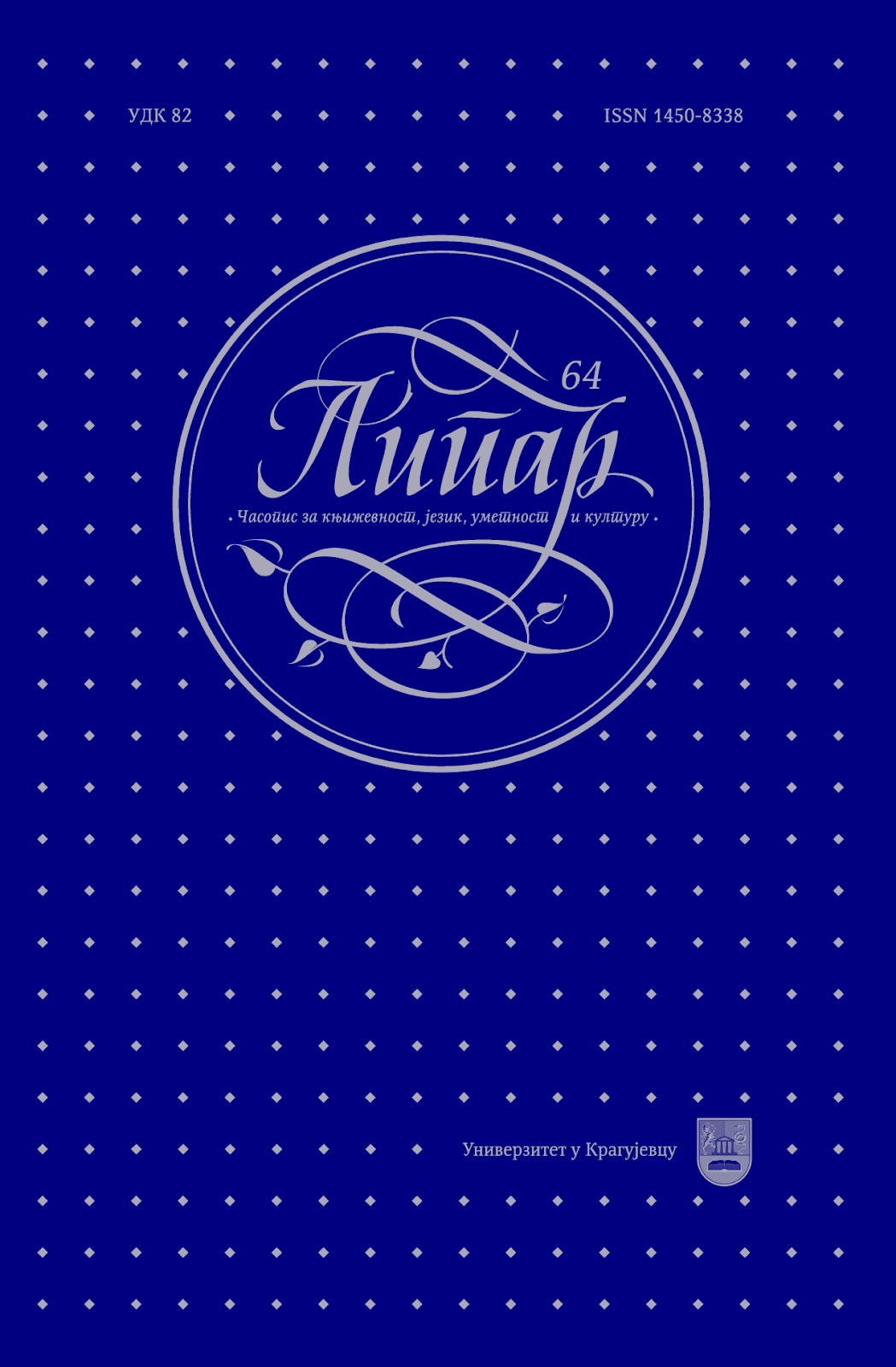
Since the 1970’s, the theme of motherhood has been a theme of investigation in various branches of the humanities, replete with contradictions which are most evident in the cultural and literary practices by which it is represented. Research into the literary representations of motherhood has its place in the analysis of the constructs of national and cultural identities and stereotypes. Although Croatian literature in the 20th and 21st Centuries provides many texts in which the real practice of motherhood, outside the ideological and patriarchal models, is represented, giving voice to a women’s real bodily, emotional and spiritual experience, academic investigations into theme have been somewhat sporadic. The aim of this work is to disclose the representations of motherhood in the autobiographical discourse of the greatest Croatian woman writer of the 20th Century, Vesna Parun. The focus here will be on the theme of unfulfilled motherhood, as her texts often mention this theme, and how it influenced the narrative construct of its author and its author’s sense of identity. What will investigated here is how Vesna Parun took motherhood in its entirety as a major theme, especially the theme of unfulfilled motherhood (a theme that can be found in the works of Croatian literature preceding her own), as well as the procedures by which she distanced herself from the traditional concepts in which a woman’s identity is determined by her identity as a mother.
More...
At the time when it was written and performed on stage for the first time, Euripides’ tragedy Medea had already brought forth significant innovations in terms of the structure of the play, the character, the function of the chorus, and the appearance of the gods. In the present paper we aim to identify the changes that the play introduces, as well as to prove that it possesses a dramatic structure typical for the period in which it was written. Basing our research on an in-depth analysis of the text itself, we single out the elements which best demonstrate the structural qualities of Euripides’ play and subsequently assess those qualities in light of the relevant scholarly work on the theory of drama. Therefore, the paper aims at highlighting the authentic characteristics of Euripides’ tragedy and proving that the Greek play has a dramatic structure. Euripides’ Medea does not deviate from the structural qualities of the literary tradition to which it belongs, but it does represent distinctive innovations regarding the form of the play and the choice of the characters in relation to the works of the other Greek tragedians
More...
This study deals with the problem of psychological motivation in the drama Komandant Sajler by Borislav Mihajlović Mihiz. Following the path of the writer’s interest in the phenomenon of fanaticism, manifested more than once in various discourse forms, we singled out and analysed the elements which are directly connected to that type of psychological profiling. Since psychology as a science – especially the Vienna school of psychoanalysis – is a topic of this drama, knowledge in this field is necessary in a dual sense in order to examine the conflict in Mihajlović’s drama from a multi-dimensional perspective (S. Freud, C.G. Jung, A. Adler). The aim of this work is also to re-evaluate the existing critical analyses of Komandant Sajler, which play a significant role in the marginalisation of this piece in the context of the writer’s oeuvre, as well as within Serbian 20th century drama.
More...
This paper deals with a conflict of value criteria in the reading of Dis’ poetry in the first half of the twentieth century. Bearing in mind that, according to the third grade curriculum in secondary schools, the reading of Dis’ poetry is preceded by a study of the modernist Serbian poetics including the reading of “Preface to the Anthology of the Recent Serbian Lyrical Poetry” by Bogdan Popović, it is necessary for pupils to be introduced with the first interpretations of poetry of this Serbian poet as well as with the values on which such interpretations were derived. Therefore, the objective of this paper is to re-examine the criteria for understanding and evaluation of the poetry of Vladislav Petković Dis through the use of a comparative method. This will enable the pupils to get a clearer insight into the development of the Serbian critical thought from the positivistic approach to deconstruction. As a result, they will be able to adequately position this poet as well as his work within Serbian literature.
More...
Interpretation is one of key notions on the convergence axis of law and literature. Both lawyers and literary scholars during their practices focus on interpreting complex language texts, establishing the meaning of expressions, reconstructing the sender’s intention, penetrating the influence of the text on the recipient, i.e. questions which turn out to be fundamental in both legal as well as literary texts. Analysis of the legal and literary interpretations allows us to identify differences as well as certain analogies between these two spheres of activity. They may be analysed through referring to the specificity of the entities participating in the interpretative practice, which are the sender and the recipient. The essential difference between interpretation in law and interpretation in literature consists of the rule that a legal text should be interpreted in the way that produces an unequivocal result. On the other hand, in the case of literary interpretation, it is difficult to reach a precise or unequivocal effect of reading the sense. Moreover, in literary interpretation it is not required. In a legal text and in a literary text the author-sender’s intention plays an important role. However, in the case of literary interpretation it is possible to apply a more flexible approach to the reconstruction of the author’s intention than in legal interpretation, where it is necessary to take into consideration rules and objectives of law only. The separateness of legal interpretation is justified foremost by the fact that it is specific purpose-oriented, which is establishing the meaning of the substance of applicable law
More...
The literary activity of Wenceslas Makowski (1880–1942) who was a prominent politician in the Second Republic of Poland (1918–1939) as well as a lawyer and a scholar, encompassed three main subjects: scientific, journalistic (mainly political and social), and artistic. His literary achievements in the scientific field of legal sciences are highly regarded. Of Makowski’s literary work in the scientific and journalistic field, his achievements in the field of criminal and constitutional law are noteworthy. Undoubtedly, this was associated with his extraordinary activity in the state bodies of the Second Republic of Poland. W. Makowski was also devoted to artistic activities and literary criticism.
More...
The subject of this article covers the relationship between literature and the law. An example of this text is The Code of Nature from 1755. Morelly’s composition is beauty, simplicity and sincerity. Morelly, and before him Rousseau, are the eulogists of Nature, exhorting us to live according to her eternal, immutable and perfect laws. On the other hand, he stays true to Cartesian tradition cult of reason and power. The Code of Nature shall be treated as the enlightenment utopia of a communist State. Life in accordance with Nature is a happy life To achieve this, the abolition of private property in social relations is required. The Code of Nature is seen as a harbinger of coming processes of codification and consolidation of the idea of modern constitutionalism.
More...
The paper explores the relation between law and literature. In the first part, based on „Bleak House” by Charles Dickens, the shortcomings of the perspective „law and literature” are indicated. The author not only criticizes the idea of treating a writer as if he were a legal historian, but she also calls into question a broader vision of literature as a mirror of social and legal reality. In the second part of the paper, still in reference to „Bleak House” (Court of Chancery, lawyers, philanthropy), a different concept of fiction within legal education is developed. Literary artistry (the use of metaphors, personifications, caricatures) and not its similarity to reality, is seen as a valuable instrument in the cultivation the moral imagination and empathy of the lawyers.
More...
Franz Kafka’s novel The process is a timeless novel, still valid and alive. It is a description of the state of consciousness of a certain age, a certain view of the world of the author, of the enslavement of man by binding law, because the authorities decide on life and the fate of the human being. „The process” is a novel about a man, who is lost in his own life. The message of the thesis is that the man is born and condemned to live or to die without any explanation. Moreover he is subordinated to the top-down established rights. The judgment, which is death, falls on us without notice. The man is liable for everything that happens in his life and the world around him.
More...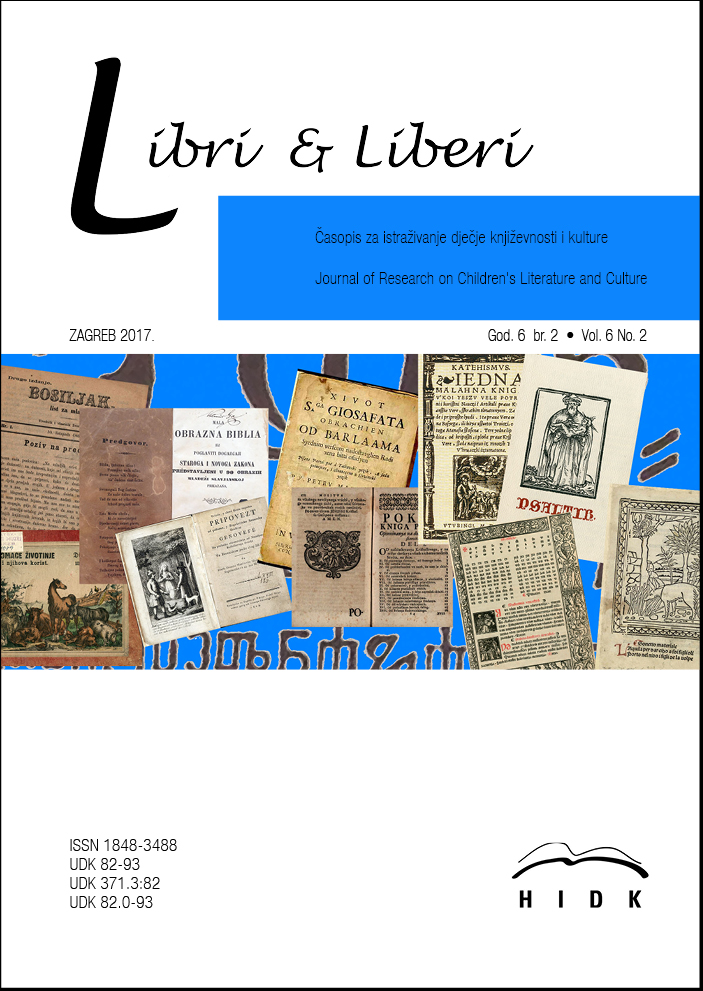
This paper takes a close look at the graphic novel The Vanished Path (2015) by comics artist and filmmaker Bharath Murthy. Sub-titled as “a graphic travelogue”, The Vanished Path relates Murthy and his wife’s pilgrimage, as new entrants to the Buddhist faith, through Hindu-dominated northern India and Nepal, where the religion was born but later lost popularity. Murthy himself acknowledges the influence of manga author Osamu Tezuka’s epic series Buddha (1972–1983), set in the era of early Buddhism. However, The Vanished Path departs from Buddha in engaging with religious politics in contemporary India, which has witnessed the recent rise of Hindu militant nationalism. My analysis shows that while the visual text of The Vanished Path presents an overt plea for rehabilitating early Buddhist thought in modern India, the visual text concurrently encodes a covert defence of the longstanding tradition of secular values in the region. This tradition encompasses the acceptance of religious minorities. The paper also addresses creative engagements in comics and graphic novels between two different Asian cultures, as opposed to the critically familiar historical and geopolitical nexus between Western countries and India.
More...
The casket scenes in The Merchant of Venice are powerful arbiters of success and failure. The casket challenge is loaded with culturally-specific signifiers which favour local contenders. Bassanio rejects the gold casket because he is aware that European moral iconographies repudiate earthly wealth (though, ironically, Bassanio is a poor illustration of the principle). The Prince of Morocco, by contrast, understandably supposes gold to be an appropriate metaphor for love – gold was, after all, the prima materia of North Africa. Morocco is on every level more worthy than Bassanio but fails because he chooses through foreign eyes.
More...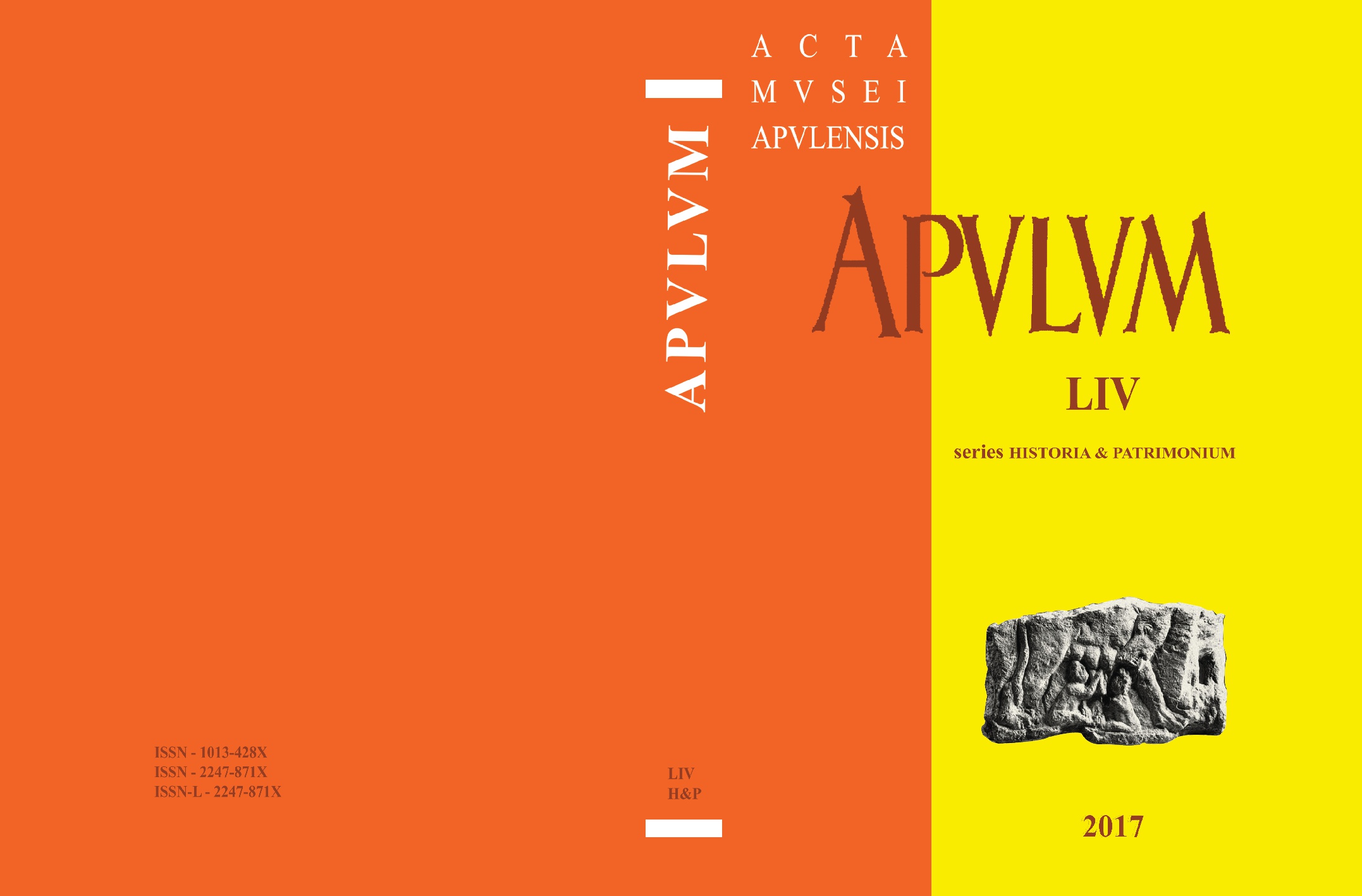
Les discussions se déroulent en marge du texte du ms.2513, que nous avons reproduit à cette fin. Jamais édité jusqu’ici, le manuscrit représente, pour le moment, la copie roumaine la plus ancienne des écrits sur André Salos, «le fou de Christ». Les discussions se déroulent aussi en marge du texte du ms. 1373, que nous avons également reproduit. C’est la première copie qui provient du sud-est de la Transylvanie connue jusqu’ici d’après André Salos. Vous trouverez là également un petit fragment conservé dans un autre ms. toujours du sudest de la Transylvanie : le ms. 1132, éloquent pour la capacité de traitement des copistes.
More...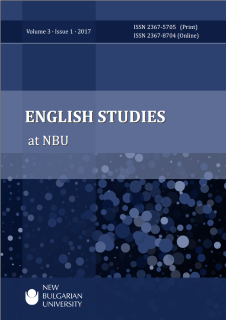
This article argues that William Shakespeare’s King Lear anticipates core political dynamics of the English Civil War (1641-49), and philosophical tenets of the British Enlightenment in John Locke and David Hume. It analyzes three principle and competing paradigms of public authority in King Lear: theodicy, nature, and the autonomy of thought. The play is historically contextualized within the 16th century. King Lear, moreover, portends revolutionary new thought patterns: the centerless universe of modern astronomy, and human embeddedness in fluid nature without fixed identity. Three variants on the concept of “nothing” – existential, social, and philosophical - interweave the cosmic and political threads, based on a circular temporality. Shakespeare’s character, Cordelia, affirms the everyday over the cosmic, and the sociological over the metaphysical. King Lear depicts a profound moral trans-valuation in early modern history, whose shifting temporal horizons remain central also to contemporary politics.
More...
The paper explores the revolutionary spirit of literary works of two Romantic poets: George Gordon Byron and Percy Bysshe Shelley. In the period of conservative early 19th century English society that held high regard for propriety, tradition, decorum, conventions and institutionalized religion, the two poets’ multi-layered rebellious and subversive writing and thinking instigated public uproar and elitist outrage, threatening to undermine traditional concepts and practices. Acting as precursors to new era notions and liberties, their opuses present literary voices of protest against 19th century social, religious, moral and literary conventions. Their revolutionary and non-conformist methods and ideas are discussed and analyzed in this paper through three works of theirs: Byron’s The Vision of Judgement and Childe Harold’s Pilgrimage and Shelley’s Prometheus Unbound.
More...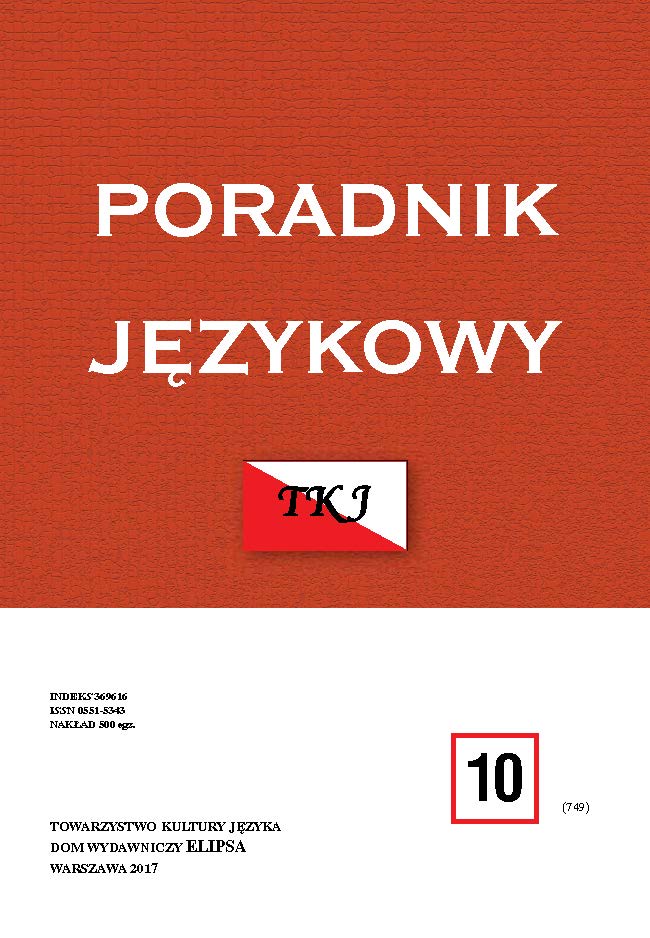
The main characters of Boża podszewka (God’s Lining) are well-known to a broad audience primarily from the 1990s TV series, which was quite controversial for residents of the Eastern Borderlands because it demystified the picture of this region and a Polish family. The TV series is based on a partly autobiographical novel by Teresa Lubkiewicz-Urbanowicz, published under the same title. The object of the study is the addressatives used by members of the Jurewicz family presented in the novel. This analysis is a sociolinguistic one and therefore it focuses on the relationships within the family of the main characters. Equivalent relationships (husband – wife) and inequivalent ones (mother – child) are highlighted. The aim of this analysis is to indicate the manifestations and determinants of the language etiquette which is realised by the addressative system. The examination leads to the conclusion that the system depends on non-language factors (the place of the recipient and the sender in the social hierarchy, the communication situation) on the one hand and on linguistic factors such as styling for the Eastern Borderlands Polish language (with numerous characteristic diminutives, suffixes with -eńk-) on the other hand. This system is customised and varied rather than automatic. The examination of addressative forms of Boża podszewka’s characters confirms the insights of researchers about the demystifying picture of a typical Polish family living in the Eastern Borderlands region.
More...